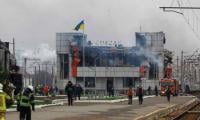Pakistan’s development prowess bears a massive question mark, the country standing in the bottom 26 when it comes to human development. This is per the latest Human Development Report, released by the United Nations’ Development Programme (UNDP) on May 6, which ranks Pakistan 168th out of 193 countries on the Human Development Index (HDI). The country attained an HDI score of 0.544 out of 1.00, the same score as last year. This places it in the ‘low’ category for human development, which is the bottom-most category, with Afghanistan being the only other South Asian nation placed in this category. While Pakistan’s overall HDI score has risen steadily since 1990, when the HDI first started, before stagnating over the last two years, its ranking is declining. Pakistan was ranked 161st in 2022 and 164th last year, which means that its ranking has dropped four places despite improving its HDI score. This means that others are simply developing faster, a somewhat familiar tale. However, the global human development picture is far from reassuring. Most countries have shown only a modest improvement in their HDI scores; some have even declined.
Alarmingly, the gap between ‘low’ and ‘very high’ HDI countries also continues to increase, an indicator of rising inequality. While the report emphasises the potential for the rise of AI and a human-centric AI approach to reaccelerate development and close development gaps, the UNDP does note that the growing importance of AI makes closing electricity and internet gaps more urgent than ever, so no one is excluded from emerging possibilities. Sadly, this is precisely what many of the ‘low’ human development countries like Pakistan are struggling to do. AI requires massive amounts of electricity and water to work, both things Pakistan is currently short of and, in the case of the latter, the shortage might only be about to get worse. The country is also reportedly ranked among the bottom 12 per cent when it comes to mobile and broadband internet speeds. How exactly is a country with such a slow net, on the verge of absolute water scarcity and with many households still reliant on wood for energy supposed to be part of the AI future?
This is something for local policymakers to ponder and develop solutions for. But, they are not the only ones accountable for the slowdown in development or the fact that many countries risk being left further behind in the AI era. The UNDP mentions rising trade tensions and a worsening debt crisis as among the major challenges facing ‘low’ HDI nations. They both have their origins in the ‘very high’ HDI West. The jingoistic trade policies and aid cuts currently being pursued by the US will likely do their worst damage in the Global South, while the way institutions like the IMF have plied developing nations with massive debts as the price for staying afloat has made it very hard to make the public investments necessary to lift development. Should these trends continue, the ongoing deceleration in development may well turn into an outright decline.















